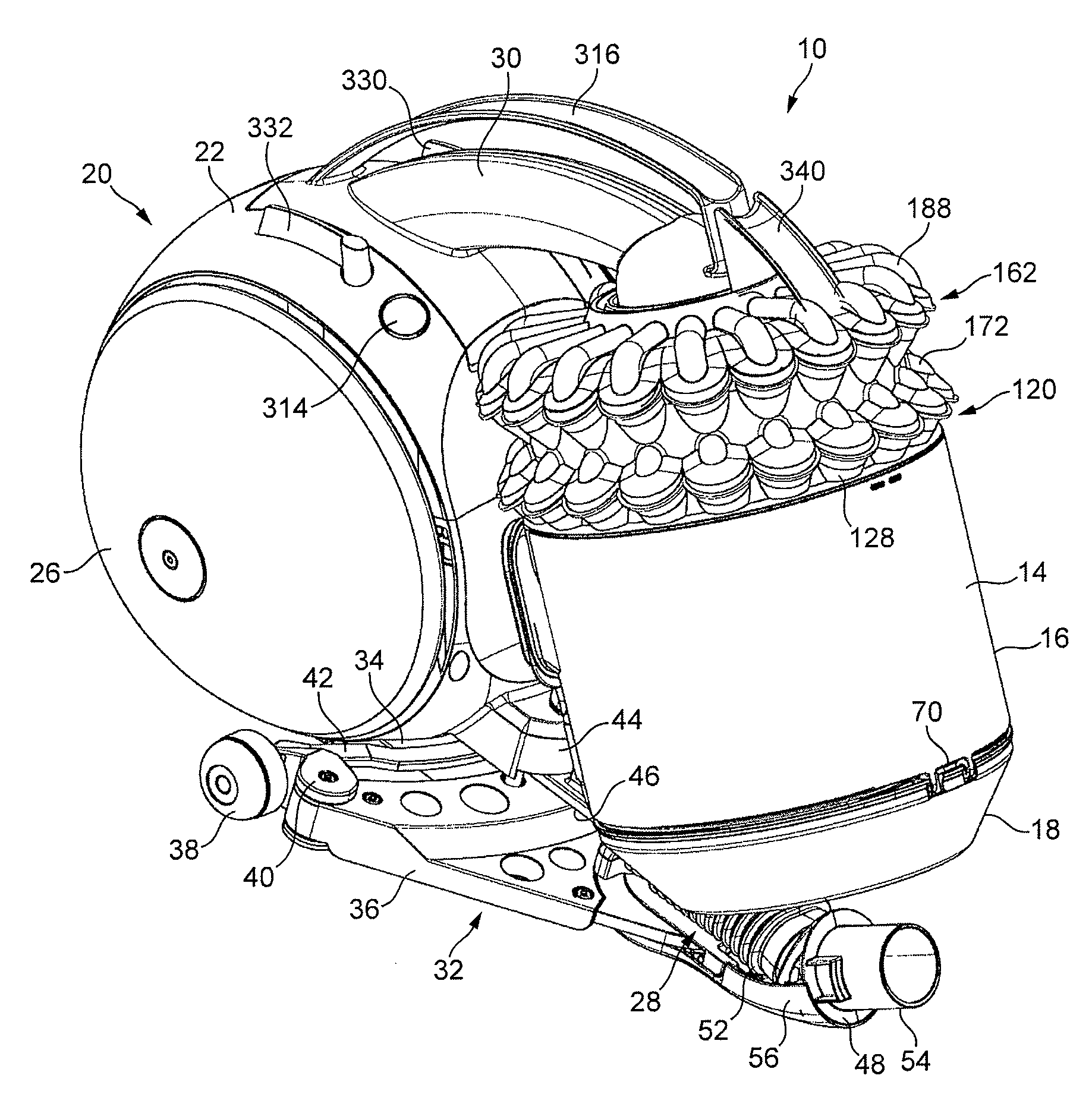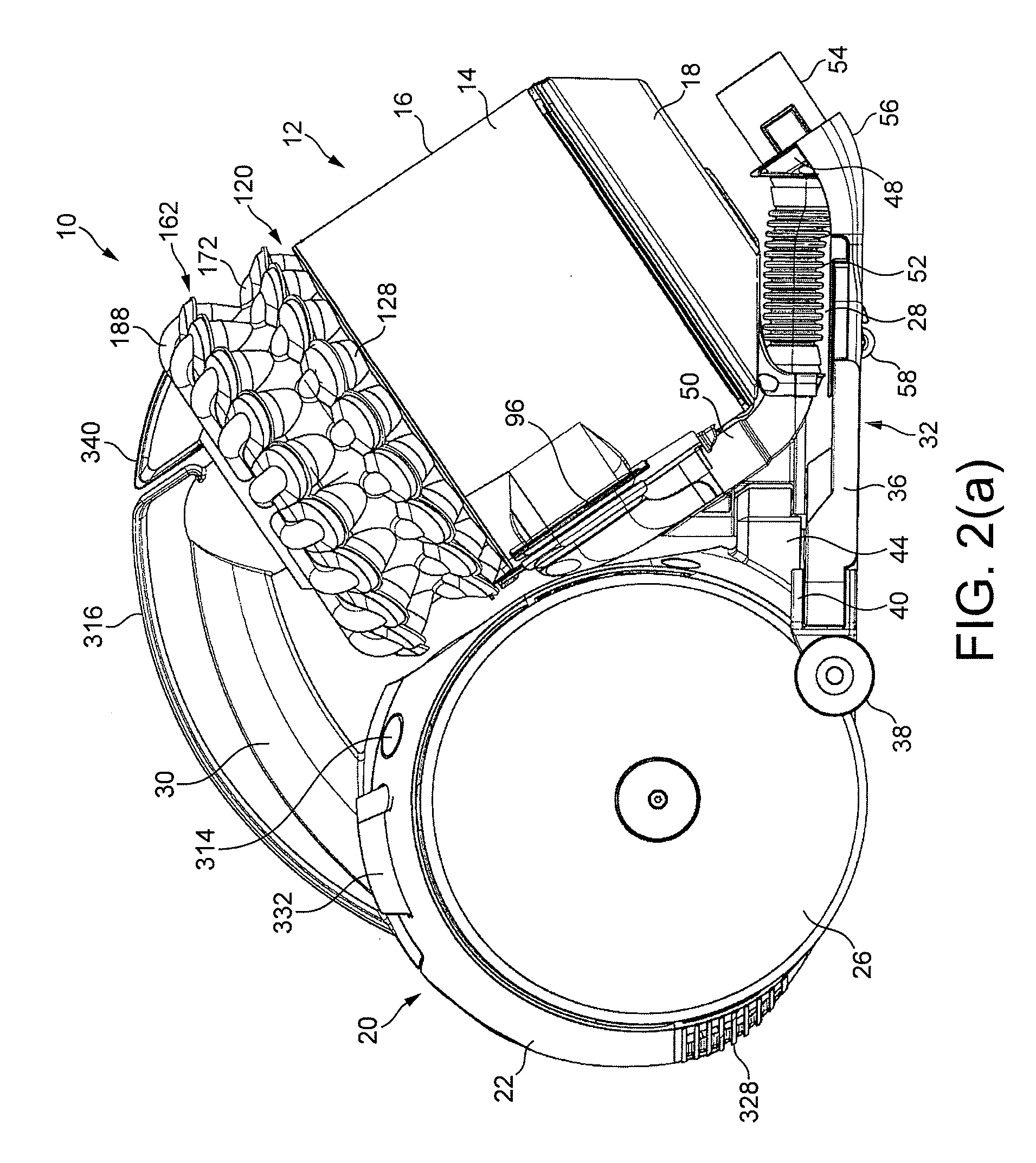Surface treating appliance
a technology for treating appliances and surfaces, applied in the direction of cleaning equipment, cleaning filter means, suction filters, etc., can solve the problems of unfavorable limited reduction of cyclone size, and rapid blockage of small cyclones, so as to achieve sufficient separation efficiency of the separation apparatus
- Summary
- Abstract
- Description
- Claims
- Application Information
AI Technical Summary
Benefits of technology
Problems solved by technology
Method used
Image
Examples
Embodiment Construction
[0042]FIGS. 1 and 2(a) illustrate external views of a surface treating appliance in the form of a vacuum cleaner 10. The vacuum cleaner 10 is of the cylinder, or canister, type. In overview, the vacuum cleaner 10 comprises separating apparatus 12 for separating dirt and dust from an air flow. The separating apparatus 12 is in the form of cyclonic separating apparatus, and comprises an outer bin 14 having an outer wall 16 which is substantially cylindrical in shape. The lower end of the outer bin 14 is closed by a base 18 which is pivotably attached to the outer wall 16. A motor-driven fan unit for generating suction for drawing dirt laden air into the separating apparatus 12 is housed within a rolling assembly 20 located behind the separating apparatus 12. With reference also to FIG. 3, the rolling assembly 20 comprises a main body 22 and two wheels 24, 26 rotatably connected to the main body 22 for engaging a floor surface. An inlet duct 28 located beneath the separating apparatus ...
PUM
 Login to View More
Login to View More Abstract
Description
Claims
Application Information
 Login to View More
Login to View More - R&D
- Intellectual Property
- Life Sciences
- Materials
- Tech Scout
- Unparalleled Data Quality
- Higher Quality Content
- 60% Fewer Hallucinations
Browse by: Latest US Patents, China's latest patents, Technical Efficacy Thesaurus, Application Domain, Technology Topic, Popular Technical Reports.
© 2025 PatSnap. All rights reserved.Legal|Privacy policy|Modern Slavery Act Transparency Statement|Sitemap|About US| Contact US: help@patsnap.com



